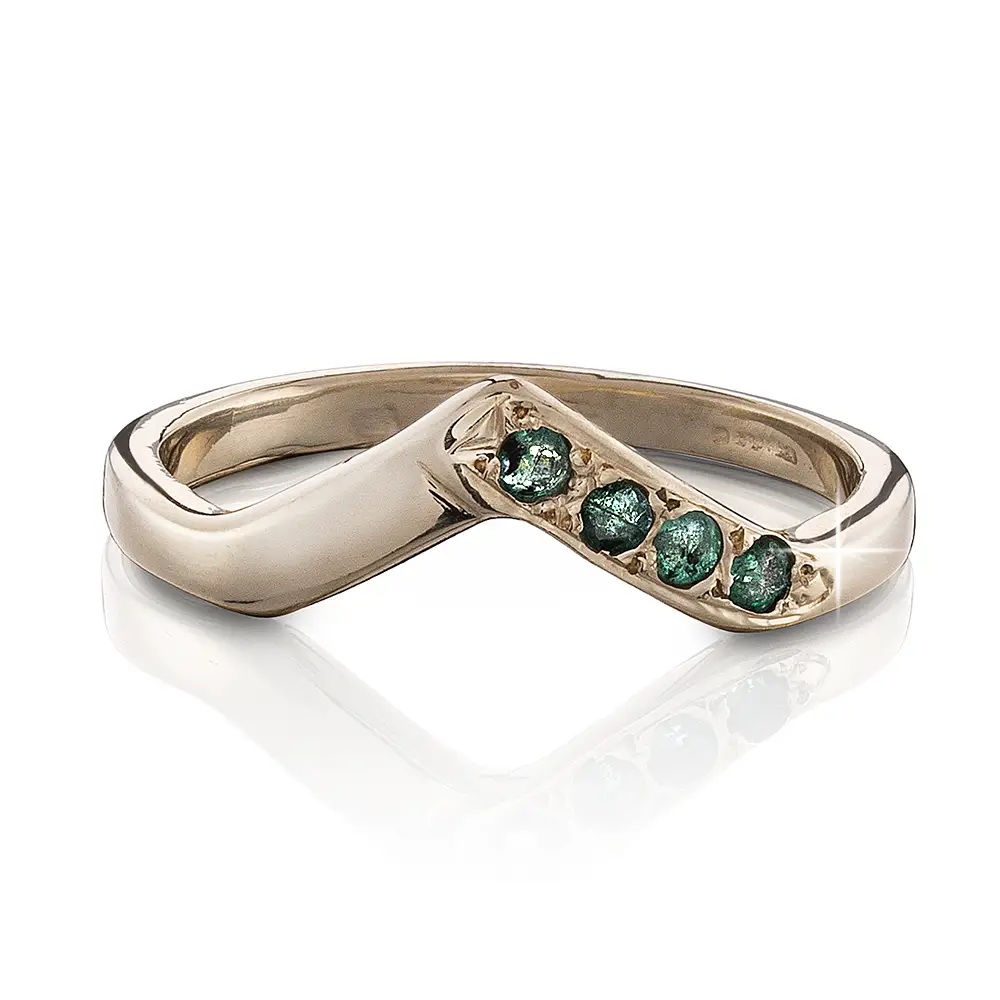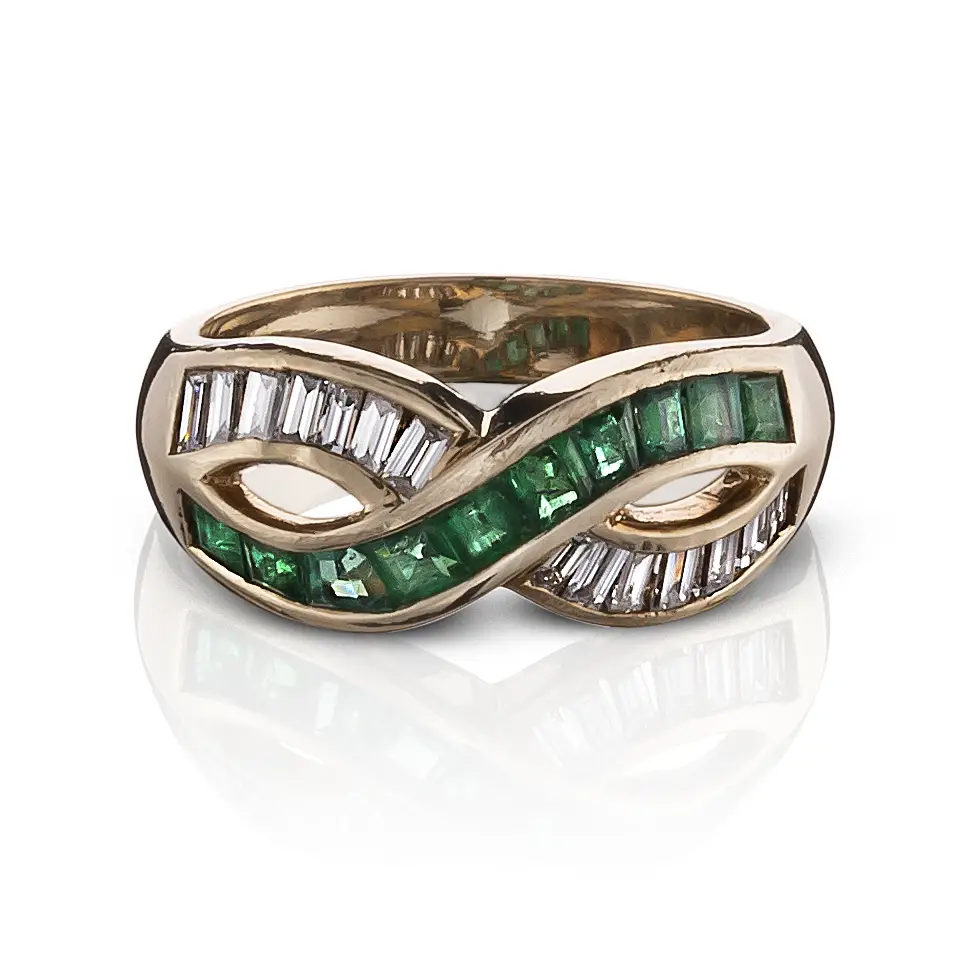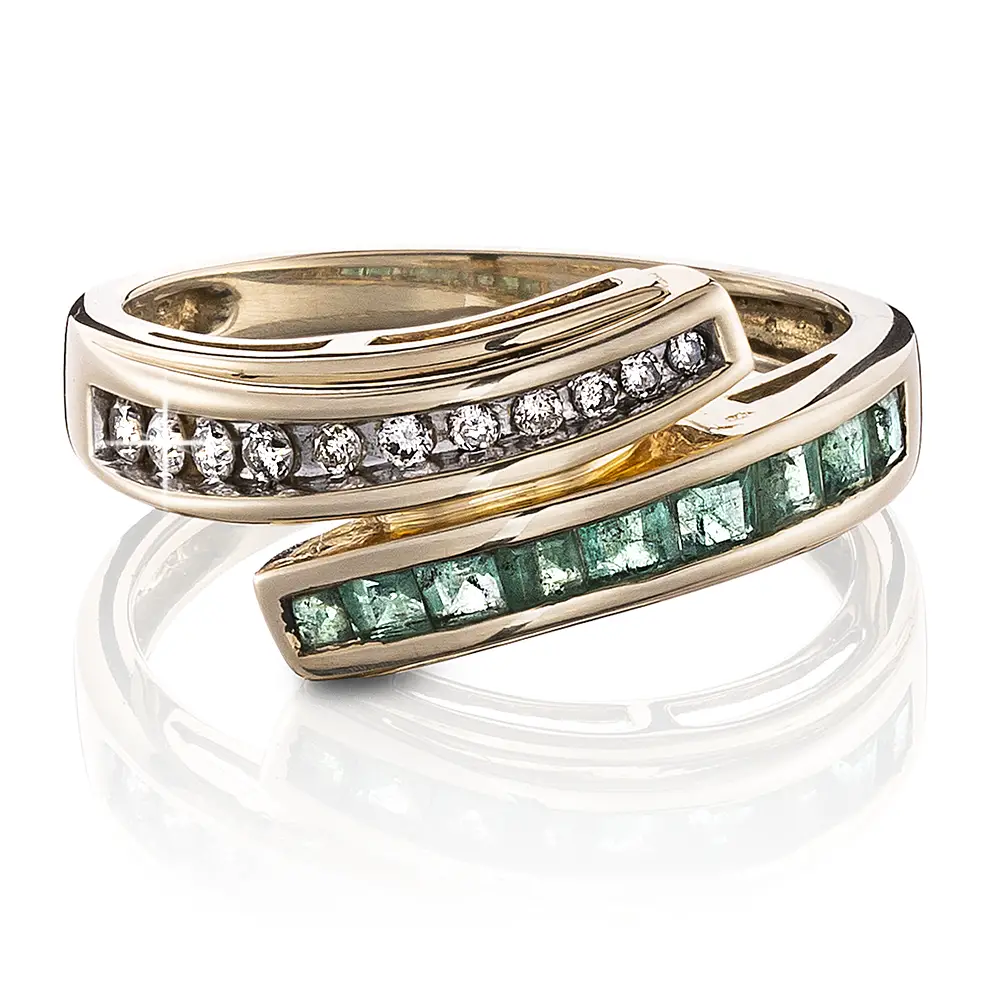Emeralds are one of the most popular gemstones in the world, after rubies and sapphires.
People love their beautiful green color and unique properties. But where do they come from? And how can you get your hands on some for yourself without having to buy from a jewelry store?
In this article, we will explore a few of the mining locations of emeralds and tell you where to find them!
If you have a panache for adventure and wish to do your own mining, then you cannot go on private property where emeralds are likely to be found, but you can go to public mines that allow mining!
Whatever you find will be yours to keep!
Table of Contents
What Are Emeralds Made Of?
If you want to search for emeralds for yourself, it would help if you knew what kinds of material that you should be looking for and where to find it.
Emerald is made of a green “beryl” and this is found in metamorphic rocks where a hot magma (lava) has come into contact with sedimentary rocks such as limestone or shale.
The growth pattern is a cylindrical hexagon of different shades of greens.
They are formed when chromium, vanadium and iron are present in the mineral beryl.
Chromium gives the emerald, depending on how much it is present, the vivid green color, while iron gives the stone a bluish tint.
Where Emeralds Are Most Common
If you live in the USA, then you can actually find out exactly where there are emerald mines in the 5 different states that they have been found. The five states are:
- North Carolina
- South Carolina
- Connecticut
- Montana
- Nevada
It should be noted that these do not produce an abundance of emeralds, and most of the emeralds that we have on the market come from Columbia and Zambia, where they are the most abundant.
- Columbia. Here, we find that 90% of the emeralds in the world are mined in the Muzo Valley.
- Zambia. The Kagem mine is now the largest producer of emeralds in the world, surpassing the mines even in Columbia which once held that title.
- Brazil. Although mines in Brazil do produce a vast quantity of emeralds, they are lighter in color than those mined in Columbia.
How To Find Emeralds Yourself
Now that we know a little more about emeralds, let’s explore how you can find your own!
This can be as adventurous as you wish, from simply looking in your own backyard to taking a trip out to one of the many public mines.
There are a few ways that you can go about looking for emeralds:
- Go on an expedition to one of the public mines where emeralds have been found in the past.
- Look for metamorphic rocks in areas where there has been recent volcanic activity.
Once you have a general idea of where to look, it’s time to start exploring! Be sure to bring plenty of water and snacks, and wear sturdy shoes. You never know what you might find!
What To Look For When Finding Emeralds
If you live in the United States, then your best bet is to first look for mines that are located in the state nearest to you.
Because this is no longer the good ole days of the wild west, you will have to find mines that are not on private property.
Find out if the mines that you locate are open to the public and if they allow the public to sleuth or search for emeralds.
You will be going underground and will be given instructions and will also be given the necessary equipment so that you can pick around and find them.
If you have an aversion to going underground, where they are found in lava deposits, then you can sit at a sluice box at a riverbed and sort through the tailings for a chance to find leftovers from mining.
So here is an example of what you will encounter when you have located an active emerald mine:
Crabtree Emerald Mine in North Carolina
Let’s take a venture to North Carolina and to the Crabtree Emerald Mine which is one of the two mines that is open to the public.
First you will have to contact the Mountain Area Gem and Mineral Association to schedule a visit to the mine.
After being granted permission you will need to print two copies of release forms from their website.
Next, sign and mail along with your check which will allow mining for a nominal charge per adult per day.
You will need to carry the release form with you when you are in the mine or you will have to leave.
Follow the rules and only use the hand tools that they provide and do not tunnel or dig into the walls of the mine.
Anything that you find is yours to keep!
Emerald Hollow Mine
Another mine is called The Emerald Hollow Mine and they offer three different ways to mine emeralds and will assist you to identify anything that you find.
You can prospect by sluicing, you can go “creeking”, or you can go into the mine.
Each of these ways will cost a different price. The process is basically the same for any mine that you venture to regardless of which state.
How To Identify an Emerald
If you are going to mine on property that is open to the public then you will be shown in detail how to identify what raw emeralds look like before they send you on your way.
Pay attention because many times the emeralds will be embedded in black rock and will be easy to overlook.
Emeralds don’t just pop out of a rock so that you can easily see them, but with a little focus you can begin to know exactly what you should be looking for.
Uncut emeralds are much easier to identify than faceted ones are.
An emerald is a hexagonal prism and its growth characteristic is going to be presented in this way.
Among the rock that it is formed on, you will see a distinctive green hue and also a distinctive cylinder hexagonal shape.
Because emeralds are soft, you will want to be careful when using tools to extract them lest they break.
They are crystal formations and are fragile.
Emeralds can be found embedded in calcite or quartz, but can also form in veins in the crust of the earth from hot liquids that escape from deeper magma.
In order to be successful finding any gemstone, you must do your homework and research to find out the matrix and locations of the gemstone that you wish to find.
Techniques & Tools For Mining Emeralds
There are a few ways that emeralds are mined.
The most common is by open-pit mining which involves taking large machinery and excavating the land until they reach the emerald deposit.
This is not a method that is used to mine emeralds exclusively, but many other gemstones as well.
Chances are that if you’re an individual, you wont have access to the heavy duty machinery that is needed for this type of mining, but there are other ways.
- Small-scale Mining. You can go to public mines and start sifting through the rocks yourself in hopes of finding some green beryl which contains chromium.
- Prospecting. This is similar to panning for gold in a riverbed, and you will be using a sluice box in order to find emeralds that might have been eroded from their original rock and deposited elsewhere.
When you go mining and prospecting for emeralds, you’ll need a few tools to help you get the job done.
A shovel and a pickaxe are essential for digging through the earth to find the gems, and a bucket or wheelbarrow are helpful for carrying away the tailings.
You’ll also need a sluice box to separate the emeralds from the other rocks and gravel, and a pair of tweezers or forceps to pick them out.
A rock hammer is useful for breaking open larger pieces of rock to look for hidden gems, but be careful not to damage any potential specimens.
If you’re serious about finding emeralds, it’s also a good idea to invest in a gem identification book so you can learn to recognize them in their raw state.
With a little patience and practice, you’ll be spotting them like a pro in no time!
What To Do With Emeralds Once You Find Them
Once you find emeralds in the raw, you have some choices.
You can just leave it as it is and consider it a specimen of natural emerald, you can take it to a gem cutter to have it removed from the rock that it is present in, and you can go even further and have it cut into a specific shape and faceted for a piece of jewelry.
Of course, it will cost you more to do the latter than the former.
Chances are if you find an emerald, depending on the quality, it will be quite valuable.
FAQ’s About Emeralds
How much is emerald worth?
Emeralds have a huge price range depending on color, clarity, carat size and type.
They can be opaque and cost very little which is still good for carving with, or they can have a fantastic color and translucency and be worth from $10K to $100K per carat.
Emeralds that have very few inclusions and that are the right hue of green will be priced far higher than diamonds sometimes due to their rarity.
How deep are emeralds found?
It is safe to say that emeralds will be found at a 40ft depth but can be found even more towards the surface of the ground depending on the rock formations.
What color of emerald is best?
The color of emerald that is the most desirable is a medium to medium dark green with good color saturation and good translucency. However, as with anything else, the colors we prefer are a matter of personal taste.
Final Thoughts
If you are the adventurous type or if you take pride in procuring your own minerals or gemstones, then there are avenues available to you to do this if you can invest in the time and have the financial resources.
This is true for most things.
The more time that you give to searching for emeralds and extensively educating yourself before you step the first foot out to find them, the more successful you will be.
Good luck! And remember, have fun with it.
After all, that’s what this is supposed to be about. Mining for your own emeralds can be a fun and adventurous hobby.



